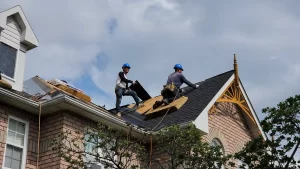In today’s era of heightened environmental consciousness, communities across the globe are seeking innovative ways to reduce their ecological footprint. Haltom City, nestled in the heart of Texas, is no exception. As residents here strive for sustainability, one area that often goes unnoticed but holds immense potential is roofing. Roofing materials and practices can significantly impact a building’s energy efficiency, carbon footprint, and overall environmental impact.

Fortunately, the quest for eco-friendly roofing solutions in Roofing Contractors Haltom City has led to the emergence of a variety of sustainable options. From traditional materials with modern twists to cutting-edge innovations, homeowners and businesses now have an array of choices to make their roofs more environmentally friendly.
Here are some sustainable roofing solutions gaining popularity in Haltom City:
Cool Roofs: Texas summers are notorious for scorching temperatures, leading to increased energy consumption for cooling. Cool roofs, typically made of reflective materials such as white membranes or coatings, help reduce heat absorption and lower indoor temperatures. By keeping buildings cooler, cool roofs decrease the need for air conditioning, thus reducing energy usage and greenhouse gas emissions.
Metal Roofing: Metal roofs have long been prized for their durability, longevity, and recyclability. In recent years, advancements in metal roofing technology have made them even more sustainable. Modern metal roofs often contain a significant portion of recycled material and can be recycled at the end of their lifespan, minimizing waste. Additionally, metal roofs can be coated with reflective finishes to enhance their energy efficiency.
Green Roofs: Green roofs, or living roofs, are becoming increasingly popular as a way to integrate nature into urban environments. These roofs are covered with vegetation, which provides insulation, reduces stormwater runoff, and improves air quality. In Haltom City, green roofs offer the added benefit of combating the urban heat island effect, creating pockets of greenery amidst the concrete jungle.
Solar Roofs: With abundant sunshine throughout the year, Haltom City is primed for solar energy harnessing. Solar roofs incorporate photovoltaic panels directly into the roofing material, allowing buildings to generate clean, renewable energy on-site. By harnessing the power of the sun, solar roofs not only reduce electricity bills but also decrease reliance on fossil fuels, thereby mitigating climate change.
Recycled Shingles: For those seeking a more traditional aesthetic, recycled shingles offer a sustainable alternative to conventional asphalt shingles. Made from recycled materials such as plastic, wood fibers, or rubber, these shingles divert waste from landfills and require less energy to manufacture compared to virgin materials.
Sustainable Roof Coatings: Roof coatings can extend the lifespan of existing roofs while improving their energy efficiency. Eco-friendly roof coatings, made from materials such as silicone or acrylic, provide a protective barrier against UV radiation, moisture, and thermal fluctuations. By reducing the need for premature roof replacement, these coatings contribute to waste reduction and resource conservation.
As Haltom City continues its journey towards sustainability, investing in eco-friendly roofing solutions is not only a prudent choice but also a commitment to preserving the environment for future generations. By choosing materials and practices that minimize environmental impact and maximize energy efficiency, residents and businesses can play a vital role in building a greener, more sustainable community.
Whether it’s embracing the cooling benefits of reflective surfaces, harnessing the power of the sun with solar panels, or bringing nature closer through green roofs, the options for sustainable roofing in Haltom City are as diverse as the community itself. By making informed decisions and prioritizing sustainability, we can pave the way for a brighter, more environmentally conscious future.
